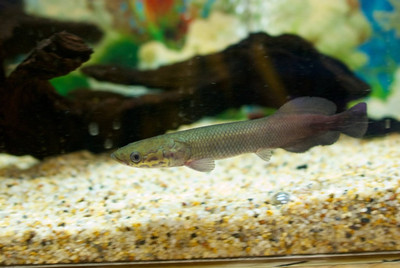Arapaima gigas
1st Oct 2025
The Arapaima gigas, often simply called the Arapaima or Pirarucu, is one of the largest freshwater fish in the world. Native to the Amazon River Basin in South America, this giant can reach lengths of over 8 feet and weigh several hundred pounds, making it a truly remarkable species. Revered in its native regions both as a food source and for its cultural significance, the Arapaima is a fascinating fish that has captured the attention of aquarists and researchers alike.
One of the most unique traits of the Arapaima is its ability to breathe air. It possesses a modified swim bladder that functions much like a lung, allowing it to surface every 15–20 minutes for oxygen. This adaptation enables the Arapaima to thrive in oxygen-poor waters of the Amazon floodplains where many other fish would struggle.
Visually, Arapaima gigas is an impressive fish with a streamlined, elongated body covered in thick, armor-like scales. Its coloration is typically dark greenish-brown along the back, with striking red or orange highlights near the tail. These brilliant markings make it an unmistakable sight in large aquariums or in the wild.
Due to their enormous size and specialized needs, Arapaimas are not suited for the average home aquarium. They require massive enclosures—often public aquariums or private facilities—with powerful filtration and open swimming space. Their diet consists mainly of fish, but they are also opportunistic feeders that may consume crustaceans, small mammals, or birds in the wild. In captivity, they thrive on a varied diet of fish, shrimp, and other meaty foods.
Basic Care Guidelines (for advanced keepers or institutions):
* Tank size: Thousands of gallons (public aquarium scale)
* Temperature: 75°F – 86°F
* pH: 6.0 – 6.8
* Diet: Carnivorous – fish, shrimp, meaty foods
* Behavior: Generally calm but predatory, requires species-appropriate housing
The Arapaima gigas is not only a giant of the fish world but also a living piece of evolutionary history. For aquarists who can meet their extraordinary needs, they represent one of the most majestic and awe-inspiring species to ever grace a freshwater aquarium. For most, however, they remain a creature best admired in public aquariums or in the wild, where their true scale and beauty can be fully appreciated.

